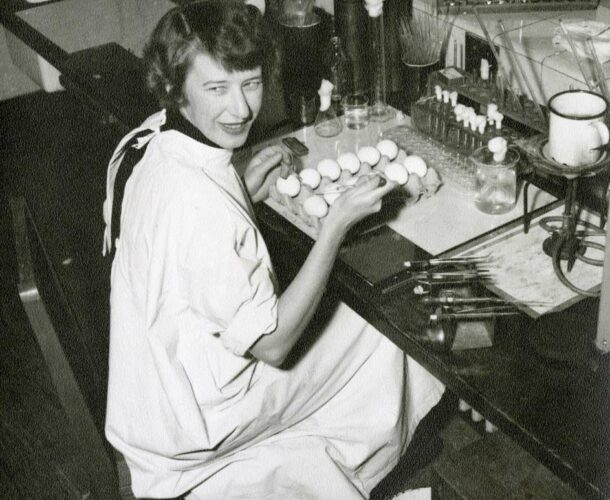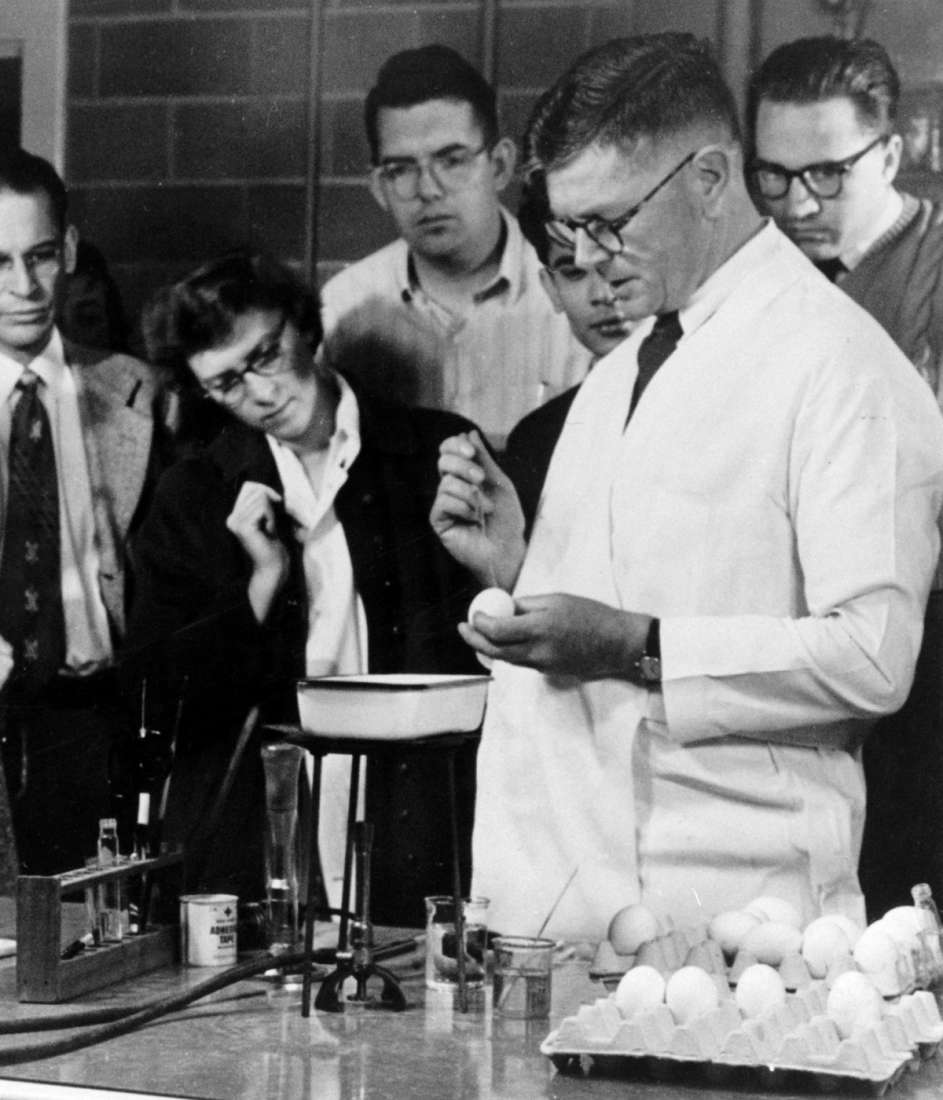Sir Frank Macfarlane Burnet’s work on developing an influenza vaccine continues. Burnet’s team creates two live influenza strains for a nasal spray vaccine in chicken eggs to trial on humans test for immunity.
Quarantined in a seaside house
Only one of our set human experiments need be described. Its objective was to find whether two well-adapted chick embryo strains would immunise as judged first by the production of antibody in the blood, and then by a test with what we hoped would be fully virulent virus grown for only two transfers in the embryo.
It was virulent and when we made the final test – all of us, volunteers, virologist, trained nurse and cook, quarantined in a big seaside house 40 miles from Melbourne – we had two severe attacks of influenza in subjects who had no antibody to start with. There were two other student volunteers with no antibody, one had a mild attack and an antibody rise, the other a big antibody rise showing that the virus had multiplied freely but no sign or symptom of illness.
The other thirteen had antibody at the beginning of the experiment and showed neither symptoms nor further antibody production after the test with the virulent virus.” – Frank Macfarlane Burnet, Walter and Eliza Hall Institute 1915-1965, Melbourne University Press, 1976
The trial is a success and leads to the inoculation of volunteers in the Australian Army. Although a dead-virus vaccine developed in the US becomes the standard for influenza immunisation, Burnet’s method of growing sufficient virus in hens eggs is widely adopted.





